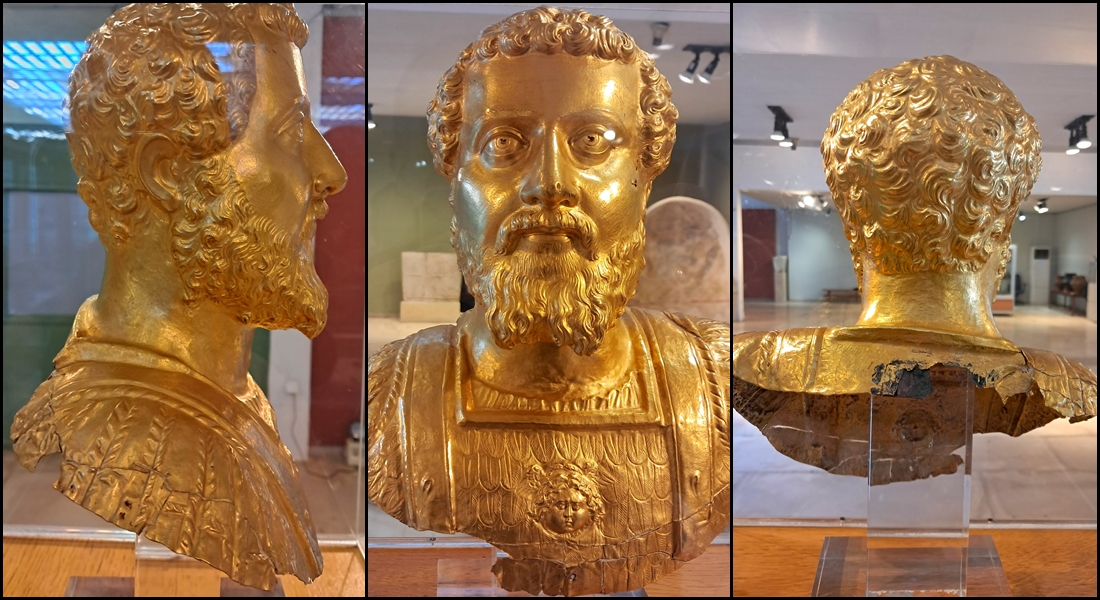A Unique Treasure on Display
In the Archaeological Museum of Komotini, an extraordinary artifact is captivating visitors: the golden bust of Roman Emperor Septimius Severus. This exceptionally rare piece, one of only two surviving golden busts of Roman emperors, holds immense historical and artistic significance. Originally discovered in Plotinopolis—near modern Didymoteicho—the bust is a testament to the grandeur and craftsmanship of ancient Rome.
The Discovery and Historical Significance
Uncovered in 1965 during military excavations, the bust was found at a depth of 1.6 meters beneath the surface. Despite minor damage, including a small crack on the left cheek, it remains remarkably well-preserved. Dating back to approximately 194–197 AD, this masterpiece is made of 23-karat gold, stands 28.4 cm tall, and weighs around 980 grams.
This bust was not merely decorative—it served a ceremonial purpose. Mounted on a pole, it was carried by the imaginiferi, Roman military standard bearers responsible for parading the emperor’s image. This practice reinforced the emperor’s presence and authority, even from a distance.
Artistic Excellence and Craftsmanship
The craftsmanship of this artifact is nothing short of extraordinary. Created from a single sheet of high-purity gold, the bust showcases intricate detailing through embossing and engraving techniques. The contrast between polished and matte finishes enhances the emperor’s facial features, highlighting details such as his elaborate beard and hair. The artistry involved reflects the skill and precision of ancient Roman metalworkers.
The Debate Over Its Permanent Home
Currently, the golden bust is housed in the Archaeological Museum of Komotini. However, the Byzantine Museum of Didymoteicho has already set up a dedicated display case, hoping to reclaim the artifact for its original region. This proposed relocation has sparked discussions among historians and cultural authorities, with many considering it a justified move.
A Must-See Before Renovations
For those eager to witness this rare historical treasure, visiting soon is essential. The Archaeological Museum of Komotini is expected to undergo renovations in the near future, which may limit public access to this extraordinary exhibit.
A Legacy of Roman Art and History
The golden bust of Septimius Severus is more than a stunning relic—it is a bridge to the past, offering a glimpse into the opulence and political influence of the Roman Empire. Its survival through centuries underscores its cultural importance, making it a must-see artifact for history enthusiasts, scholars, and casual visitors alike.







